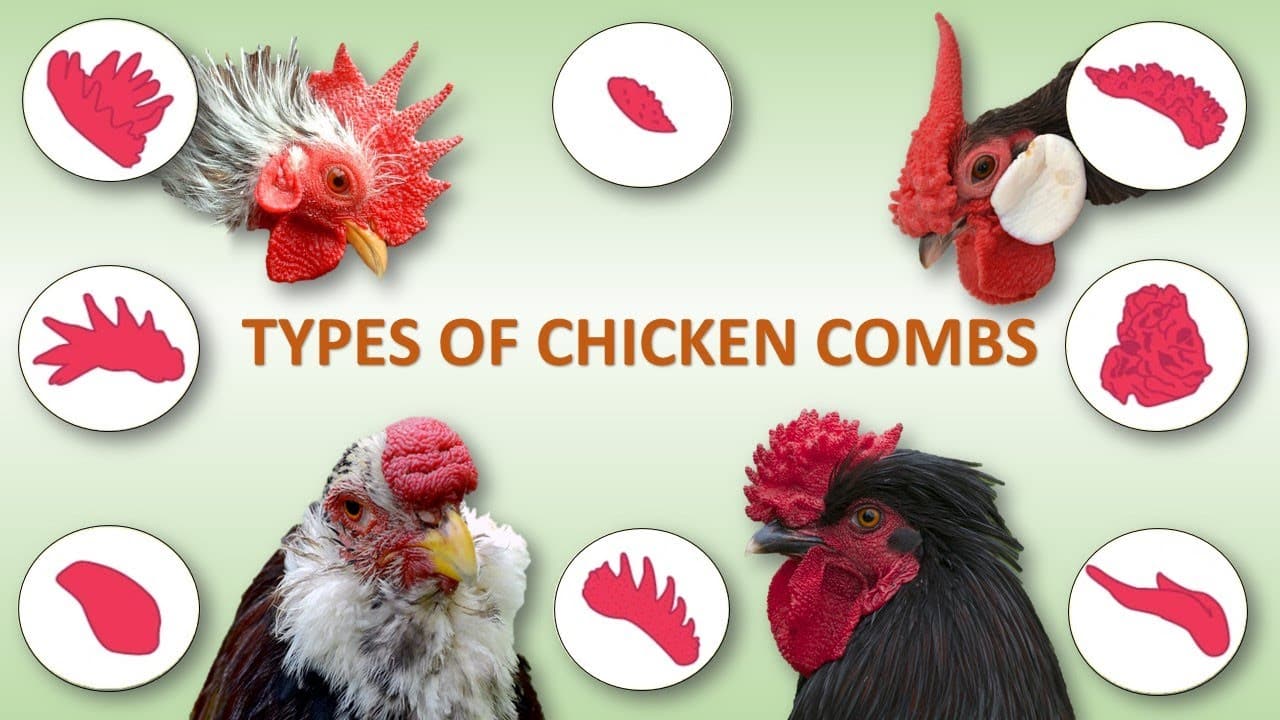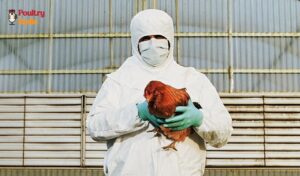All About Chicken Combs: Your Complete Guide
Today, let’s delve into the significance of the chicken comb. Did you know that the first ‘combs’ were discovered on the remains of the Edmontosaurus, one of the last dinosaurs on Earth? We will uncover the reasons behind why chickens have combs, explore the different types of combs, and learn how to maintain their health.
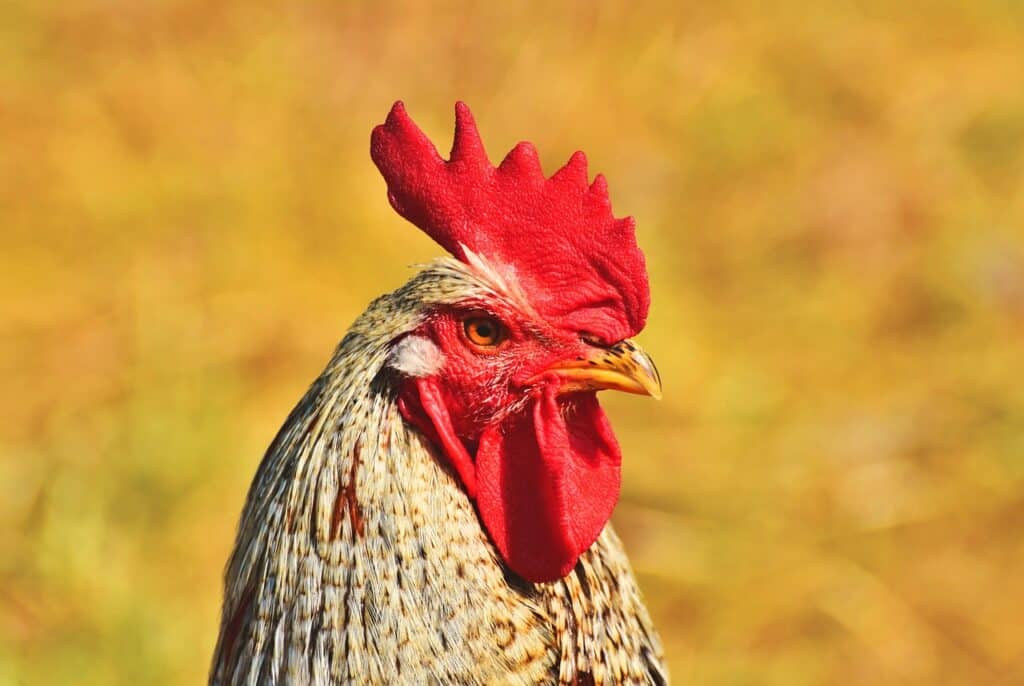
What is a Chicken Comb, And Why Does a Chicken Have One?
Did you know that a chicken’s comb is considered an organ? Similar to the heart, liver, and kidneys, this red appendage serves several beneficial purposes that might surprise you.
Chicken Combs: Amazing Facts:
Heating Control
Chickens don’t sweat, so they rely on other methods to regulate their body temperature. They use their wattles and comb as their heating and cooling center. During hot weather, the comb releases some body heat into the air, helping to lower the bird’s temperature, while in the winter, it assists in preventing heat loss.
Understanding Chicken Health Through Comb Color
Determining a chicken’s health can be as simple as observing the color of its comb. A healthy chicken typically sports a comb that is red, purple, or black, depending on its breed.
A young chicken that has not yet reached the laying stage may have a small pinkish comb, which is considered normal due to the absence of hormonal surges. Conversely, pale or shrunken combs may indicate potential health issues.
These issues could range from anemia (often associated with lice and mite infestations), worm overload, and heat exhaustion, to molting. Identifying potential problems with a black comb could be challenging, but familiarizing yourself with the texture and elasticity of a normal comb can serve as a useful reference.
An anemic or dehydrated comb typically feels dry and flat, while a blue comb might indicate circulatory or respiratory issues or even coldness. On the other hand, a hot-to-touch, fire engine red comb may suggest the presence of a fever.
Understanding a chicken’s health through its comb color is a matter of piecing together all available clues. For example, a few diseases like Fowl Pox and Avian Influenza show clear signs on the comb and wattles of a bird.
Sexual Attraction
Young chicks start with small, inconsequential combs, but as their hormones kick in, their combs will begin to grow.
For male chicks, testosterone leads to the development of noticeable combs and wattles, while female chicks under the influence of estrogen will develop smaller versions of these. When choosing a mate, they seek out the strongest ones to give their offspring the best chance of survival, and the comb and wattles serve as signals of vitality and strength.
A rooster’s large, eye-catching comb is a way of communicating to the hens that he is fit, healthy, and capable of producing healthy chicks. On the other hand, hens have smaller combs that still convey the same message. A vibrant red comb indicates that the bird is healthy and sexually mature.
Research findings have indicated that hens with larger combs typically have greater bone density and lay more eggs. Additionally, combs and wattles are believed to help chickens recognize their flock mates.
If you are curious about the chicken matting process then click here
Various Chicken Comb Types
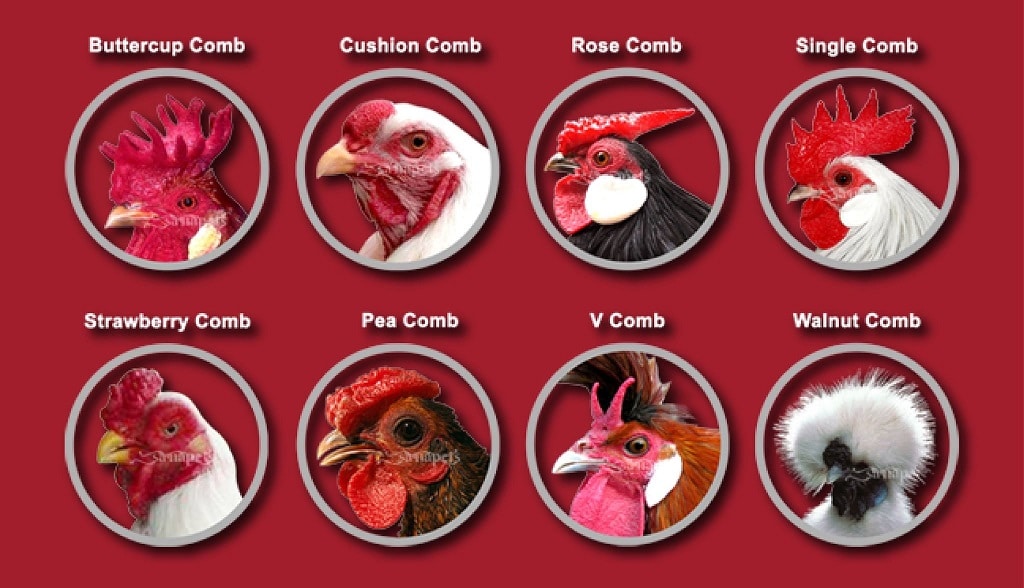
Single combs
The single comb is the most common type found on chickens. When people picture a chicken’s head, they often imagine this classic comb.
It is a relatively thin piece of soft flesh that extends from the beak along the top of the skull, with the rear section of the comb extending past the skull.
The top part of the comb features five or six deep serrations, or ‘points’, which are smaller in the front and rear sections and larger and more prominent in the middle section.
It’s worth noting that the comb is much more upright, larger, and thicker in male birds, while the appearance can vary in female birds depending on the breed. Some of the breeds with single combs include Rhode Island Reds, Leghorns, and Minorcas.
Rose Combs
The rose comb is identifiable by its solid, broad, and nearly flat top appearance. This compact, fleshy comb develops into a well-tapered spike at the rear, extending over the back of the skull.
Different breeds may exhibit variations in the shape of the comb, with some curving upwards and others lying flat. Additionally, small, round protrusions may cover the front and middle sections of the comb. Breeds with rose combs are Wyandottes and Hamburgs.
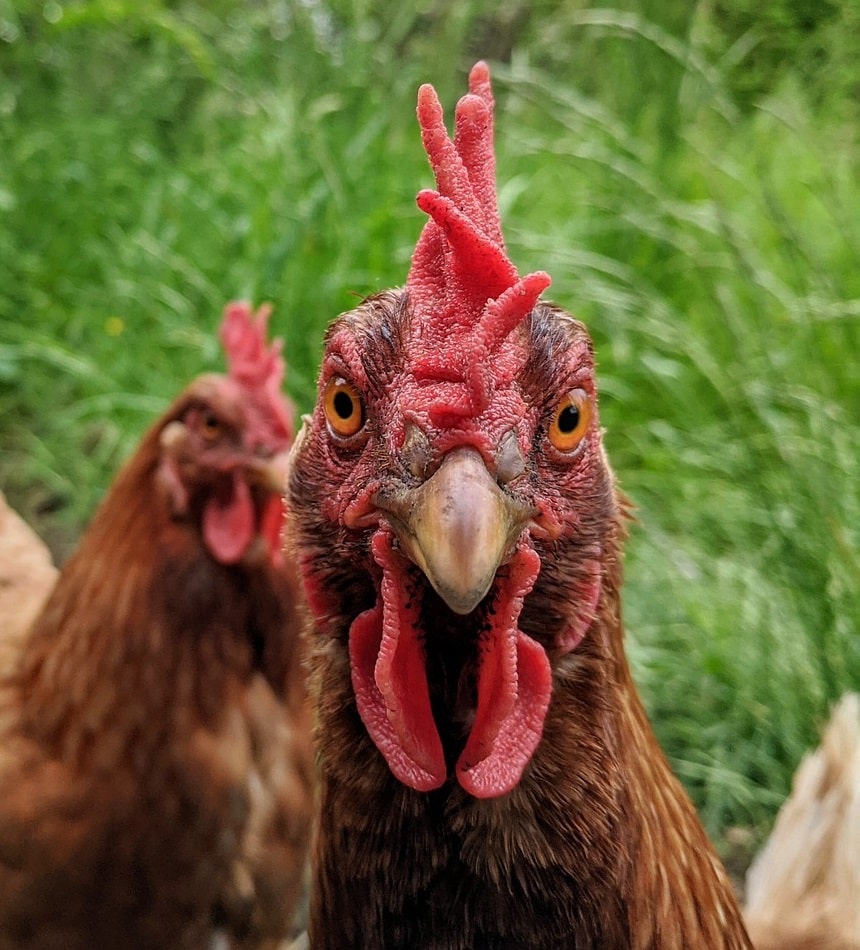
Strawberry combs
The strawberry comb is a small, forward-sitting protrusion on top of the chicken’s head that resembles the shape and texture of a strawberry, with the larger end covering the beak.
Breeds with strawberry combs: Malays, Yokohama
Cushion Combs
The petite cushion comb is compact and positioned low on the head. It should feel quite smooth to the touch—without any spikes, points, or serrations—and it won’t extend beyond the middle of the skull.
Breeds with cushion combs: Chanteclers.
Buttercup Combs
The buttercup comb is bowl-shaped and sits squarely on top of the skull. It has a deep center surrounded by points, with a single point in the front above the beak, and it is closed in at the back. Points emerging from the center of the cup are considered to be a serious defect.
Breeds with buttercup combs: Sicilian Buttercup (only breed)
Pea Combs
Though similar to the cushion and strawberry combs, the pea comb has some distinctive features. It’s medium in length, sitting low on the head, and topped with three lengthwise ridges – the center ridge is slightly higher and larger than the outer ones. Sometimes, the outer ridges are marked with small rounded serrations.
Breeds with Pea Combs: Ameraucanas, Brahmas, Sumatras.
V-Shaped Combs
The V-shaped comb is created by two clearly defined, thick, horn-like points that extend to the left and right, perpendicular from a single base at the top of the chicken’s beak.
Breeds with V-shaped combs: Crevecoeurs, Appenzellers, Sultans
Walnut Combs
The walnut comb is a medium-sized solid comb, named for its surface characteristic resembling a walnut shell. It resulted from the genetic combination of two dominant alleles for the rose and pea combs—breeds with walnut combs: Silkies, and Orloffs.
Frequently Asked Questions
What is the comb on a chicken?
A comb, also known as the fleshy, red outgrowth on top of a chicken’s head, comes in various types such as single, rose, pea, cushion, strawberry, buttercup, and V-shaped. The comb is not only for display but also helps to cool the bird in hot weather. For hens, the comb serves as an indicator of egg production status.
Can you eat chicken combs?
Absolutely, you can eat them, but they’re really prized for their texture, similar to gummy candy, rather than their flavor, which is quite subtle. They have a consistency akin to chicken feet, if you’ve ever had those, but without the bones and cartilage.
What are chicken combs made of?
The comb is composed of collagen fibers in the form of protein bundles, similar to a rubber band, which helps give the comb its elasticity. The comb is made up of several layers, with the outer layer called the epidermis, which is the least vascularized area of the comb.
Why is chicken comb white?
When a chicken’s comb turns white, it’s a sign that the bird is molting. It’s common for their comb and wattle to become pale in color during this natural process. Molting occurs when a chicken sheds its old feathers to make way for a new set of full, fluffy feathers, which help to keep them well-insulated in preparation for colder weather.
What is the most common chicken comb?
The most popular type of chicken comb is the single comb, and it’s the one that comes to mind for most people when they picture a chicken’s head – the “classic” comb.

